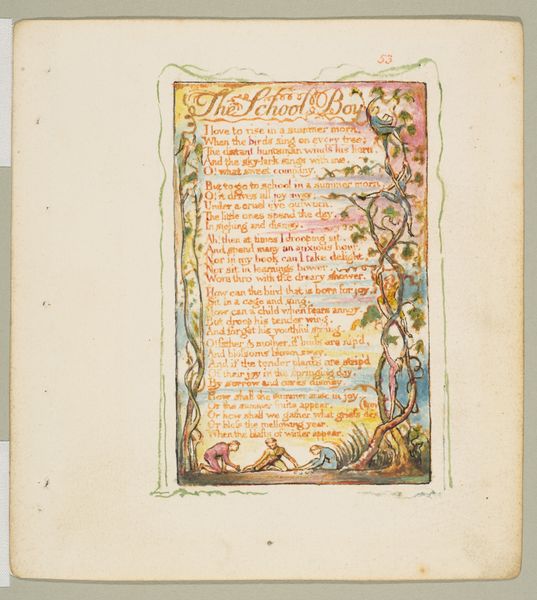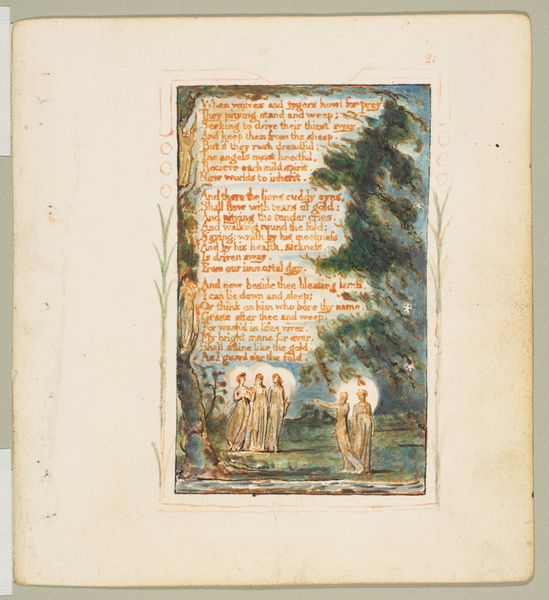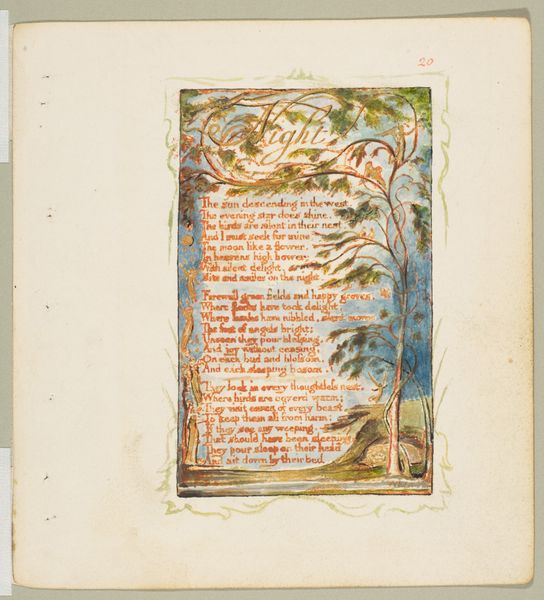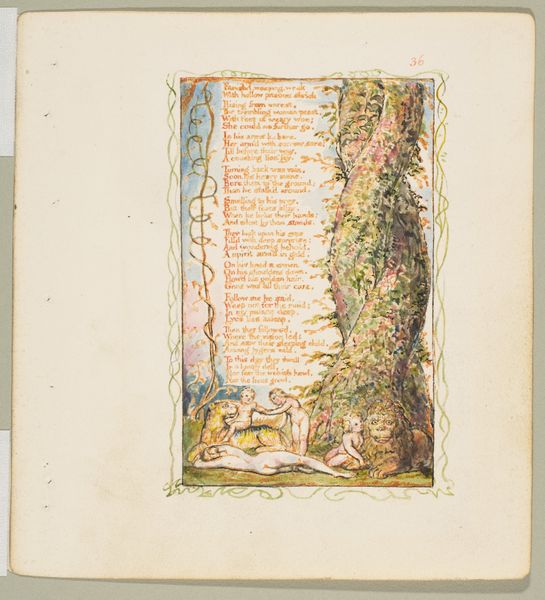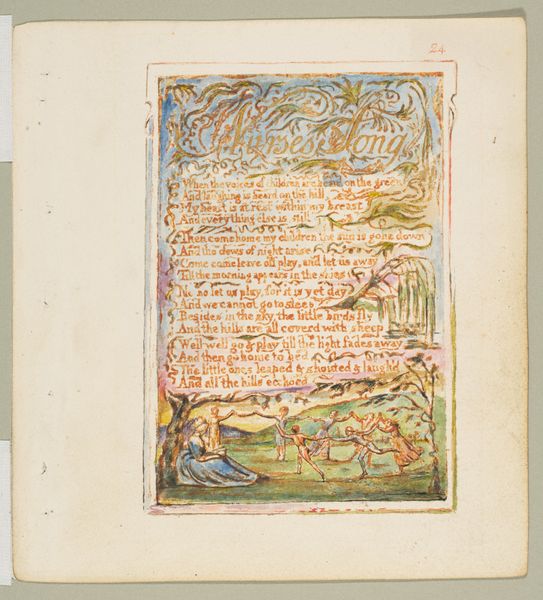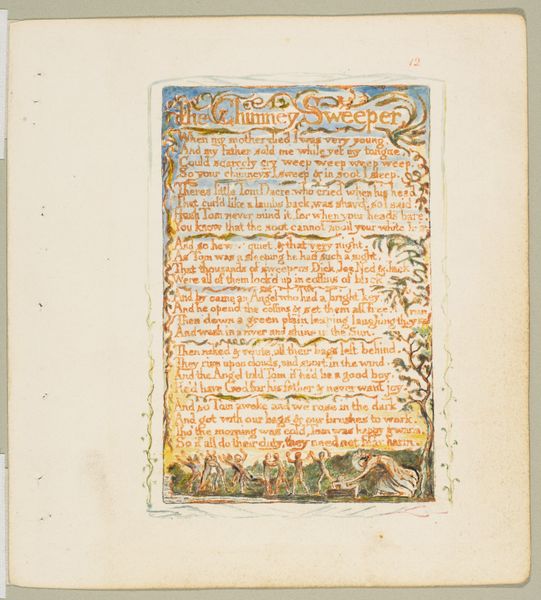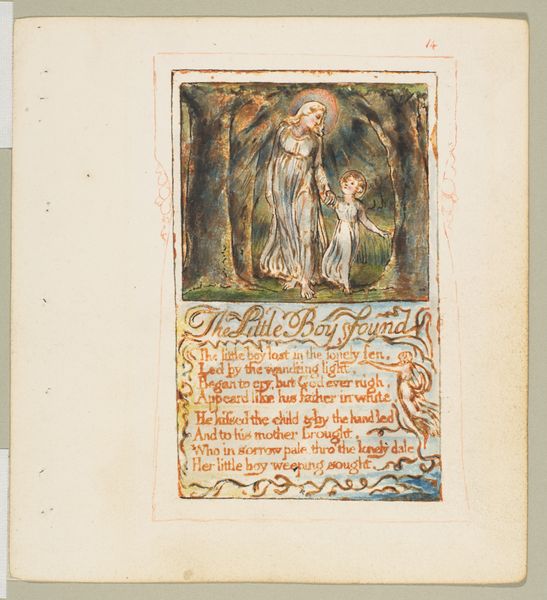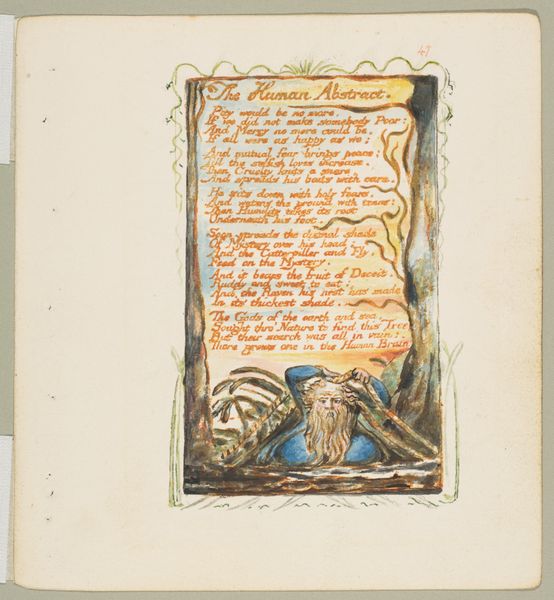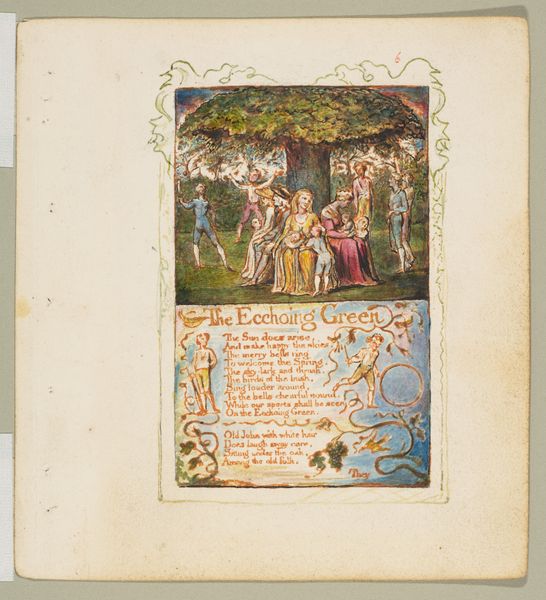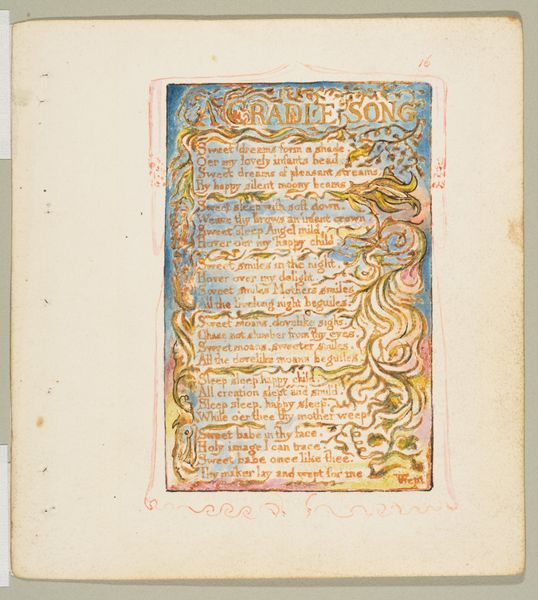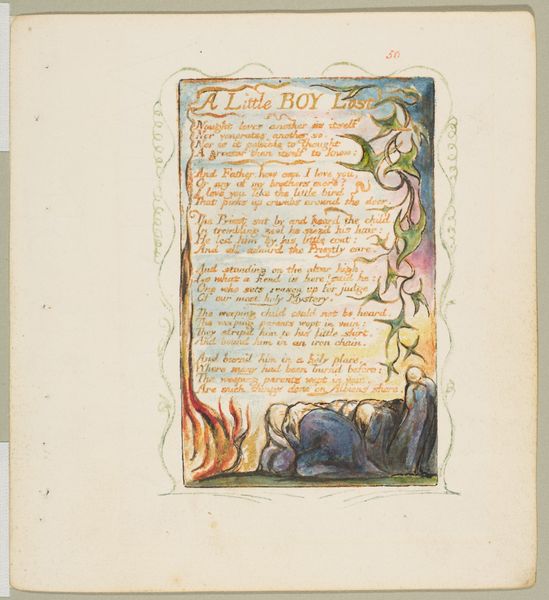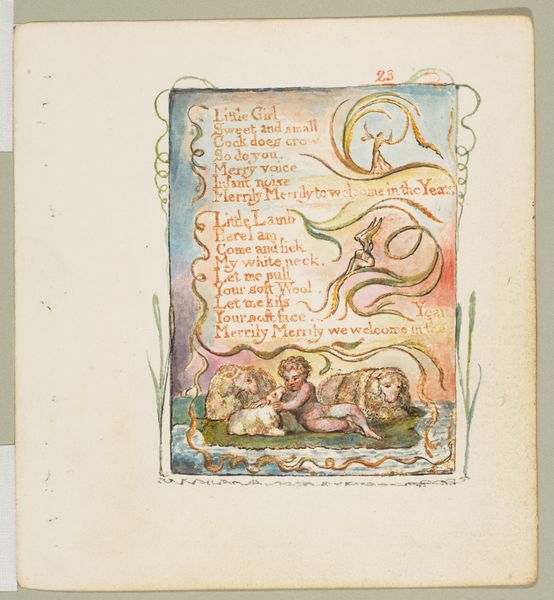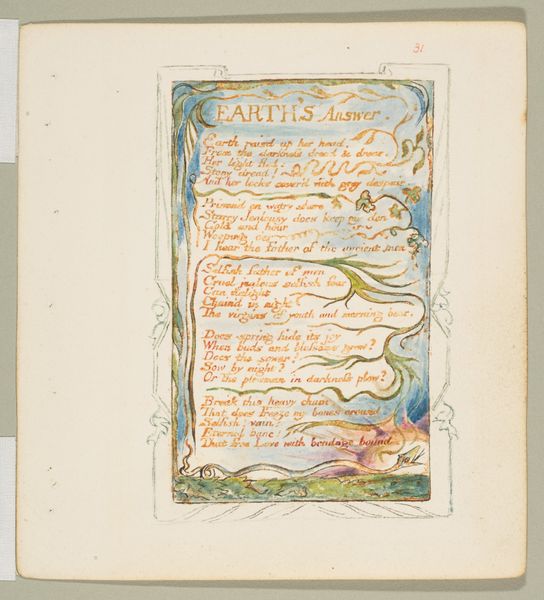
Dimensions: sheet: 6 3/16 x 5 9/16 in. (15.7 x 14.1 cm)
Copyright: Public Domain
William Blake produced "Songs of Innocence: The Lamb," using relief etching and watercolor, a technique he pioneered in the late 1700s. Blake was a visionary poet and artist, deeply critical of the societal norms and industrial revolution sweeping through England at the time. Blake intertwines visual and textual elements in his illuminated prints to explore themes of innocence, faith, and the divine. In "The Lamb," Blake presents an idealized vision of childhood, nature, and spirituality which was in stark contrast to the grim realities of child labor and social inequality prevalent in 18th-century England. "The Lamb" is a gentle, lyrical poem which takes the form of a dialogue between a child and a lamb, the poem reflects on the nature of creation and the connection between innocence and divinity. As Blake writes, "He is meek & he is mild; / He became a little child." Blake's work invites us to reconsider the prevailing narratives of his time, while offering a glimpse into an alternative vision of harmony, compassion, and spiritual awakening.
Comments
No comments
Be the first to comment and join the conversation on the ultimate creative platform.
